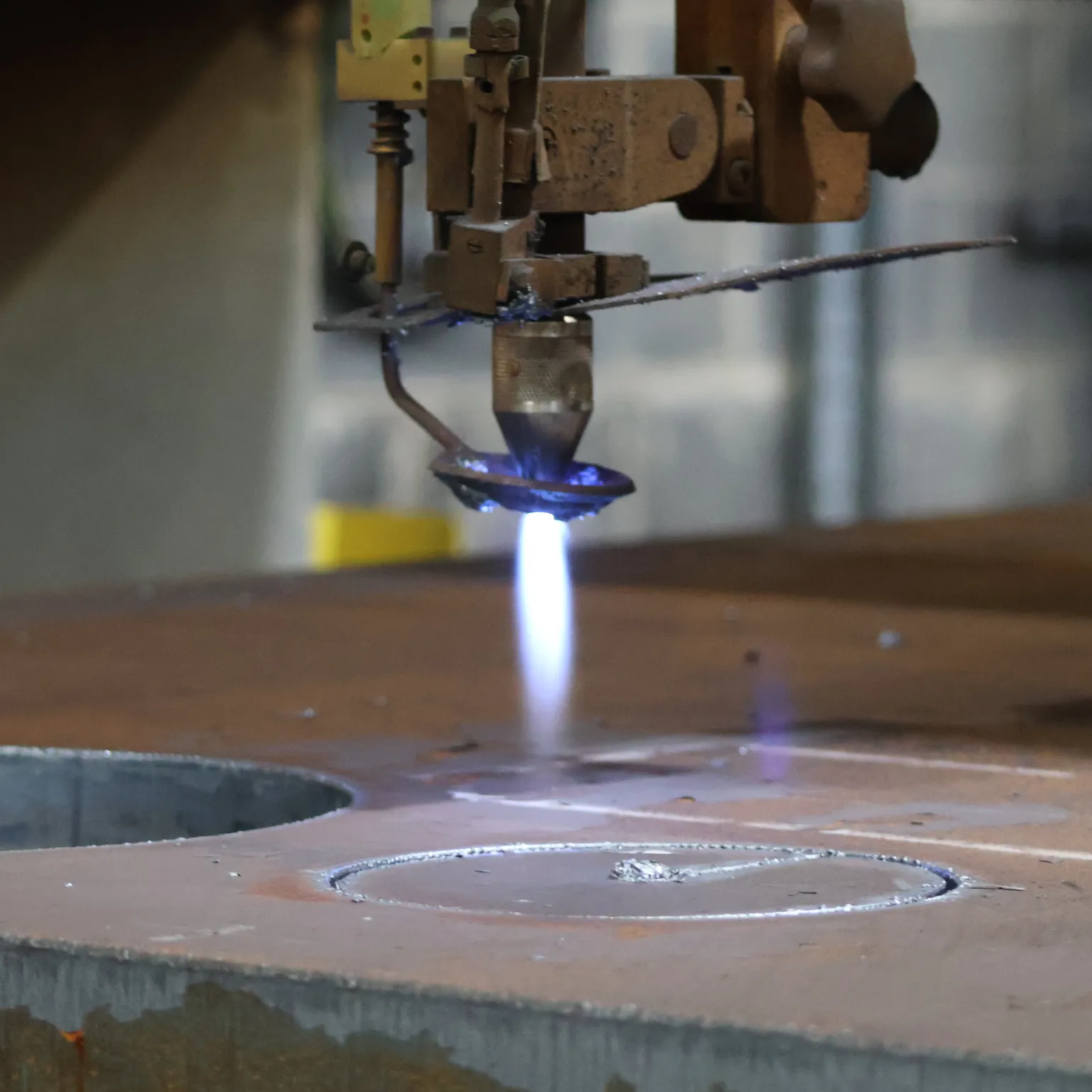The pros and cons of gas cutting and plasma cutting
Precise and clean cutting is critical in the metal fabrication industry. Two of the most widely used methods to achieve these cuts are gas cutting and plasma cutting, both of which are used at every project scale, and even by the Engineering and Physical Science Research Council.
Both methods offer unique advantages, but also come with certain limitations. Choosing the correct method is important for achieving efficient project progress and a desirable outcome.
In this article, we will explore the pros and cons of gas cutting and plasma cutting to help you make the best choice for your next project.

Gas cutting or oxy-fuel cutting is a metal cutting technique that uses heat generated by the combustion of fuel gases like acetylene combined with pure oxygen. A specialised cutting torch combines these gases and creates a flame that can cleanly cut metal, first by heating it to a kindling temperature and then oxidising it with a stream of pure oxygen to melt the metal along its cutting line.
This type of metal cutting is ideal for use on thicker metals like low-alloy steel and mild steel. It is used for a range of applications, including scrap metal processing, metal fabrication, demolition, and salvage, and creating bevelled edges. It is also a generally cost-effective method.

Plasma cutting involves the use of super-heated ionised has streams which can reach temperatures of up to 40,000°F to cut metal. Plasma cutting tools use electrically charged gases like nitrogen or compressed air, which are forced through a nozzle to create a concentrated plasma arc ideal for cutting metal.
The heat generated by these tools rapidly melt metals along their cutting lines, while the gas jet produced also expels molten metal, creating clean and precise cuts.
Gas cutting is a cost-effective metal cutting method, as gas cutting equipment is often more affordable than plasma cutting tools. It is well suited to cutting thicker metals, and gas cutting tools also tend to be portable, making them suitable for use at remote work sites and outdoor locations.
Gas cutting is also ideal for creating gas cut steel plates with bevelled edges – an essential step in preparing metal sheets for welding.
Plasma cutting creates exceptionally clean and accurate cuts while producing minimal melted metal slag and minimal wastage as a result. It also boasts rapid cutting speeds when compared to gas cutting, especially for thin metals.
Plasma cutting tools can also tackle a wider range of materials, including copper, aluminium, and stainless steel. They produce less heat distortion than their gas cutting counterparts, creating a more precise heat zone that minimises the distortion of thinner metals.
Gas cutting may take longer to complete compared to plasma cutting, which may extend project deadlines in some cases. It may also produce rougher and less precise cuts, requiring extra finishing for a clean look.
The intense heat produced by gas cutting tools can distort or warp some thinner metals, and the process is best used on low alloy steels and mild steel and may not produce effective results on other types of metals.
Plasma cutting tools are typically more expensive than gas cutting equipment and can only cut metals of a limited thickness.
Additionally, they may also be less portable than gas cutting tools, as they require a constant source of power, unlike gas cutting tools which use gas cylinders as a power source. Plasma cutting can also generate significant amounts of noise and fumes, meaning that this process requires PPE and proper ventilation during use.
The type of cutting that suits your project will depend on its requirements, thickness, and type of steel.
Gas cutting is best for projects dealing specifically with thicker pieces of steel, mild steel, and low alloy steels. It is also well suited to demolition and salvage projects, the processing of scrap metals, and for producing angled and bevelled steel edges for the purposes of welding.
Plasma cutting is the best choice for projects that need clean, precise cuts and metal plates with narrow kerfs. These tools also reduce cutting time, particularly for thinner materials, making them great for projects with tight deadlines.
If you need to cut a wide range of materials, including thin copper and stainless steel, plasma cutting is the ideal choice for your project. It is also recommended for handling thinner sheets of metal while producing minimal distortion and warping.
Gas cutting and steel plasma cutting services are both highly effective methods of cutting metals, although their advantages and potential limitations do differ.
The best fit for your project will depend on your specific needs, your budget, your cutting goals, and the materials with which you are working.
Pulman Steel is the leading steel processing centre in the North of England. Contact us for all your steel needs.